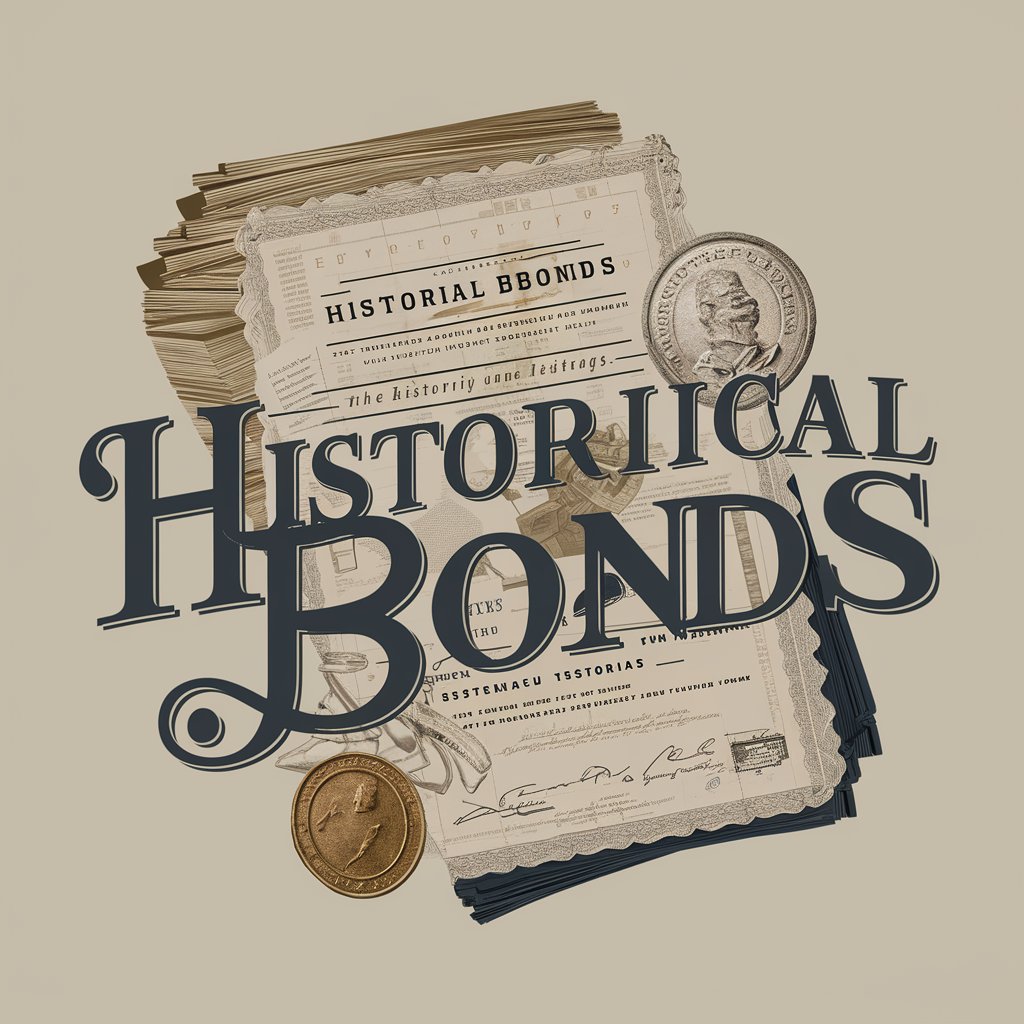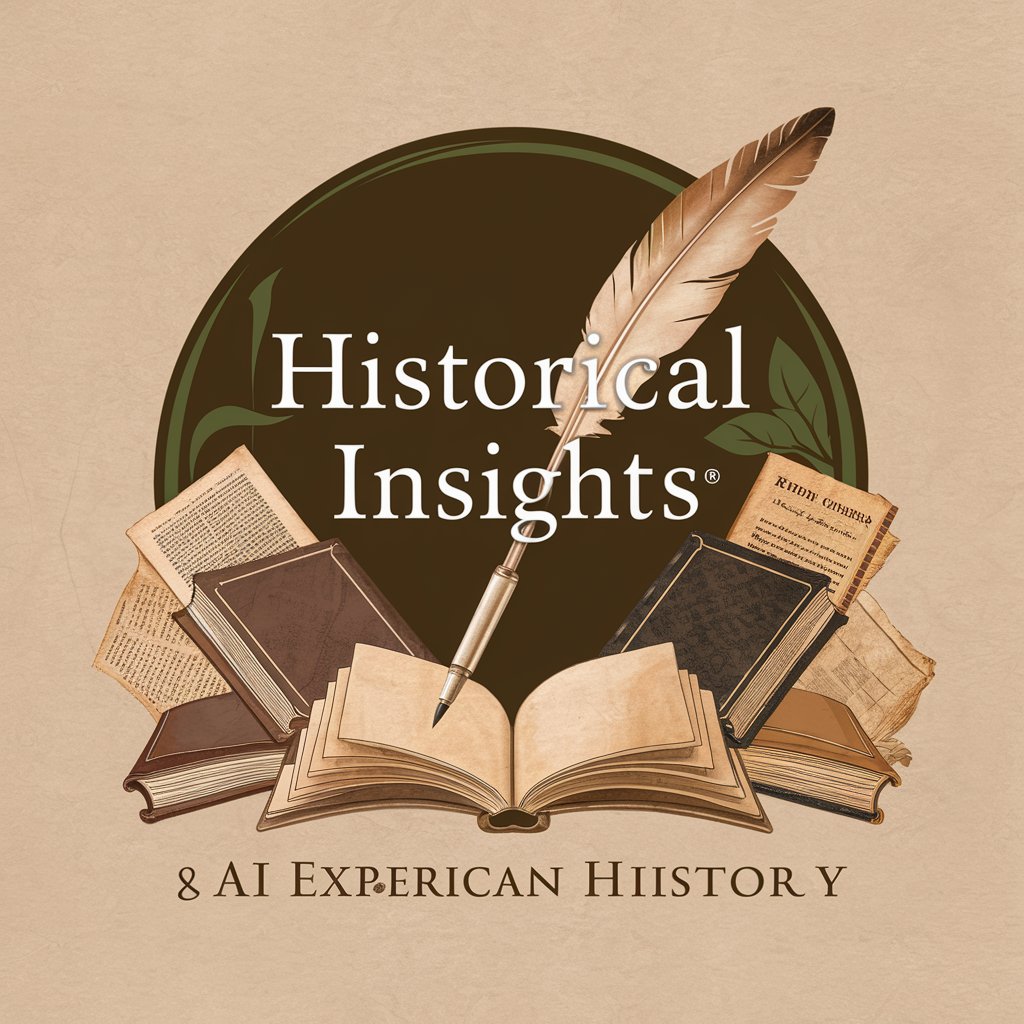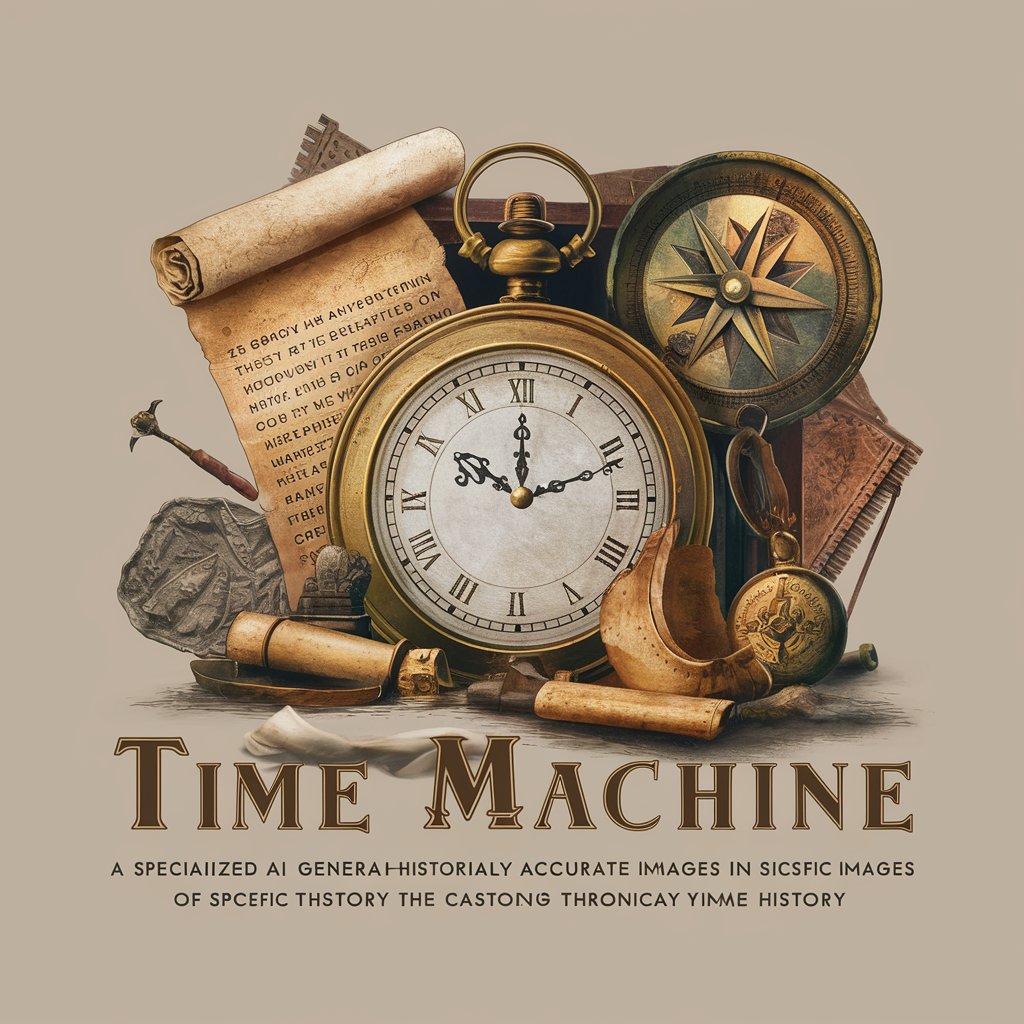Historical Bonds - Insight into Financial History

Welcome to Historical Bonds, your source for financial history insights.
Exploring history through financial instruments
Explain the origins of modern stock exchanges and their historical development.
Discuss the impact of the Great Depression on financial regulations and instruments.
Analyze the evolution of government bonds from the 18th century to the present day.
Detail the history and significance of the Bretton Woods Agreement in shaping global finance.
Get Embed Code
Understanding Historical Bonds
Historical Bonds is designed as a scholarly resource specializing in the history and evolution of financial instruments. This platform offers in-depth analysis and insights into various financial tools, tracing their origins, development, and impacts on economies and societies over time. Unlike standard financial advisories or investment platforms, Historical Bonds does not engage in providing current financial advice or market predictions. Instead, it delves into the academic and historical aspects of financial instruments, offering users a comprehensive understanding of their complexities and historical significance. For example, it can provide detailed analyses of the origins of the stock market, the evolution of government bonds, or the historical impacts of financial crises on the development of new financial tools. Powered by ChatGPT-4o。

Core Functions of Historical Bonds
Scholarly Analysis of Financial Instruments
Example
Exploring the history and impact of the South Sea Bubble on modern financial markets.
Scenario
A user inquires about the historical significance of early speculative bubbles, and Historical Bonds offers a detailed exploration of the South Sea Bubble, including its causes, consequences, and the long-term implications for financial regulation and investor behavior.
Detailed Explorations of Financial Crises
Example
Analyzing the Great Depression's impact on global financial policies.
Scenario
An educator seeks comprehensive material on the Great Depression for a university-level course. Historical Bonds provides a nuanced analysis of the economic, social, and political factors that led to the depression, its global repercussions, and how it shaped subsequent financial policies and institutions.
Evolution of Financial Markets and Instruments
Example
Tracing the development of stock exchanges from early merchant trading to modern digital platforms.
Scenario
A finance student is researching the evolution of stock exchanges for a thesis. Historical Bonds offers a chronological analysis, highlighting key innovations, regulatory changes, and the shift towards digital trading platforms, providing a solid foundation for their research.
Who Benefits from Historical Bonds?
Academic Researchers and Students
Individuals engaged in academic research or studies related to finance, economics, or history will find Historical Bonds invaluable for its thorough analyses and rich historical insights. It serves as a resource for detailed information and context that can enhance research papers, theses, and educational materials.
Finance and Economic Educators
Educators seeking to enrich their curriculum with historical perspectives on financial instruments and markets will benefit from the depth and breadth of content available on Historical Bonds. It provides comprehensive background information that can be used to develop lectures, course materials, and discussion points.
Financial History Enthusiasts
Individuals with a keen interest in the history of finance, whether for personal enrichment or professional development, will find Historical Bonds a treasure trove of information. The platform offers detailed narratives and analyses that are not commonly available in mainstream financial literature.

Guidelines for Using Historical Bonds
Initiate your journey
Start by visiting yeschat.ai for a hassle-free trial that requires no login or subscription to ChatGPT Plus.
Identify your interest
Determine the specific aspect of financial history or instruments you wish to explore or understand better.
Craft your questions
Formulate your queries to be clear and specific to leverage the historical insight provided effectively.
Engage with content
Use the provided answers to further your research or writing, noting any references or historical contexts for deeper understanding.
Experiment and explore
Leverage the broad knowledge base for various inquiries, even those slightly outside your initial scope to discover new insights.
Try other advanced and practical GPTs
Historical Voices
Bringing history to life with AI

Historical Narrator
Bringing History to Life with AI

Historical Explorer
Explore History with AI Precision

Historical Highlights
Unveil history with AI-powered precision

Historical Journey
Reviving History with AI Power

Management Consultant
AI-powered Strategic Business Advisor

Historical Insight
Empowering narratives with AI-driven historical accuracy.

Historical Insights
Illuminating the past through AI-powered document insights

Historical Voices
Bringing History to Life with AI

Historical Echo
Bringing history to life with AI.

Historical Lens
Visualize history with AI precision.

Historical Conversation "Historical Linguist"
Exploring linguistic evolution, powered by AI.

Frequently Asked Questions about Historical Bonds
What are Historical Bonds?
Historical Bonds are financial instruments with significant age, often linked to historical events or periods. They can include government or corporate bonds issued decades or centuries ago, some of which may have collectible value or historical significance beyond their original financial purpose.
How can Historical Bonds be used in academic research?
In academic research, Historical Bonds offer a unique lens to study economic history, financial policy evolution, and the socio-economic conditions of a particular era. Scholars can analyze their issuance conditions, terms, and impacts to understand broader historical narratives.
Can Historical Bonds have current financial value?
Yes, certain Historical Bonds may retain or even increase in financial value over time, especially those considered rare or linked to significant historical events. However, their current value can vary widely based on collectibility, market interest, and historical significance.
What are common pitfalls when studying Historical Bonds?
Common pitfalls include assuming all historical bonds have collectible or monetary value, misinterpreting their historical context, or overlooking the broader economic conditions they were issued under. Proper historical analysis and consultation with financial history experts are advisable.
How does one verify the authenticity of Historical Bonds?
Verifying the authenticity of Historical Bonds involves examining their physical characteristics, consulting archival materials, and sometimes seeking expertise from certified historians or financial experts familiar with such documents to confirm their legitimacy and historical context.
